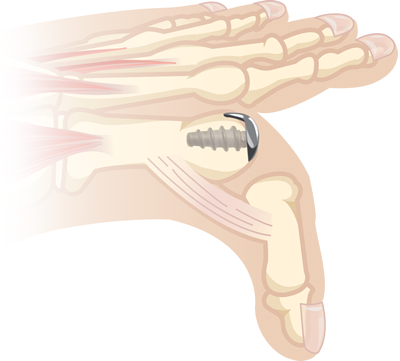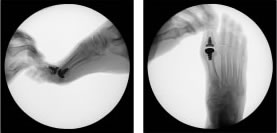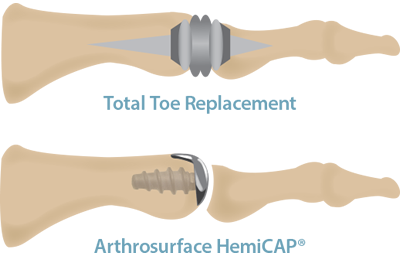Hemicap MTP - Toe Joint Implants
Over the years we've become familiar with the idea of replacing all or parts of joints with prosthetic implants. Using modern materials and precision surgery techniques, the results can be quite outstanding in terms of relieving pain and restoring almost normal mobility.

The Hemicap joint restoration technology is an excellent option for patients who are seeking to maintain a more active lifestyle and it bridges the gap between a cheilectomy and a fusion plate or total toe joint replacement.

The hemicap implants are carefully designed to match the cartilage contour of individual joints so that the cap replaces only the area of damaged cartilage and protects the remaining (healthy) cartilage in the joint.
The idea is that the implant prevents further damage to the joint and works to maintain the natural movement of your foot and toes.
Instead of a one-piece implant with a stem built in, the Hemicap consists of a cap and screw that join. These implants are well proven and robust with no reported loosening over the last 10 years.

Beyond Hemicap?
If you are unfortunate enough to have damage on both sides of the toe joint, you may have come across more recently developed total toe restoration solutions which combine the Hemicap prosthesis on the metatarsal side of the joint and a metal baseplate with plastic insert for the opposing (phalangeal) side of the toe joint.
At the moment it would be fair to say that the jury is out on the value or benefits of total replacement for these small joints. It is early days and results are mixed, hence at the moment the most reliable option for a severely degraded joint is fusion.
Many patients return to full normal activity after rehabilitation and go back to doing things that they had given up on in the years before surgery.
Carefully managed rehabilitation is crucial to maximising your post-operative motion, so it is very important that you strictly follow a protocol that enables you to maintain motion. The more you work on pushing through the post-operative pain to get motion back, the better your motion and outcome will be.
Patients are typically encouraged to begin walking the day after surgery and as the surgery is less invasive than older techniques, pain medication should be sufficient so it does not limit your ability to move or your ability to complete your physiotherapy tasks. Formal physiotherapy usually starts within two weeks of surgery to ensure motion is maintained.